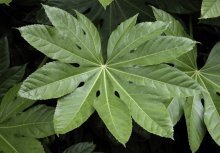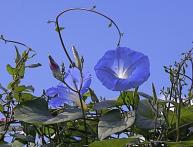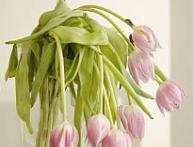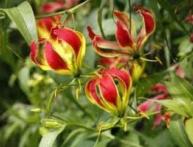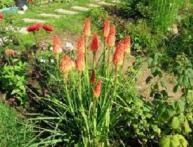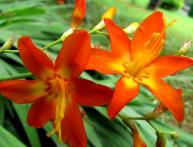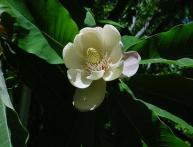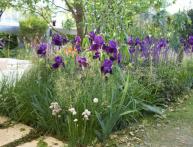Fatsia - a flower that will decorate any room
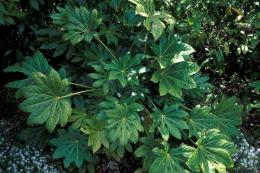
If you need to decorate a corner of the room with greenery, where other flowers do not take root or look depressing, you should plant fatsia. This flower leads among others in its unpretentiousness. From a modest sprout, within a year the beauty grows into a beautiful bush. Therefore, it is worth allocating a large area to it in advance.
Content:
- Fatsia, types and varieties
- Proper care for Fatsia
- Watering, spraying and fertilizing
- What can destroy a plant
- Application of flower
Fatsia, types and varieties
You should not expect vigorous flowering from the beauty. Fatsia flowers are not very decorative; they look like an umbrella and are whitish in color, but not everyone will be able to see them; this modest flower blooms very rarely. Fatsia will delight its owner with its unfading beauty thanks to its lush, bright greenery and unique leaf shape. The flower has two types:
- Fatsia japonica (also called Japanese aralia)
- fatskhera is a hybrid of common ivy and fatsia.
Fatskhera differs from Japanese fatsia in that it has a thinner stem, while the fatsia leaf can have up to 9 “fingers”, and the leaves of the hybrid have no more than 5. The most familiar varieties for flower lovers:
- Moseri is notable for its miniature shape.
- Spider's Web is a very famous variety, the foliage has white speckles that look like splashes.
- Variegata - the leaves of this flower are green, framed with white or cream tones.
- Annelise - has yellow-golden leaves.
- Murakumo Nishiki - this one varieties interesting light yellow leaves.
- Tsumugi Shibori - has specks all over the leaf. Reminiscent of the Spider's Web variety, but the reds are noticeably larger and larger.
Proper care for Fatsia
This flower is quite unpretentious, so it does not require special care. And yet, you need to follow a few simple rules.
Fatsia of different varieties does not have the same lighting requirements. For example, plants with white speckles or light edges require very bright light. They need to be placed where there is the most light. However, it should be remembered that the leaves can burn in extreme heat, so during the hottest hours you need to shade the plant.
Varieties that have leaves with a simple green color do great in partial shade. They can withstand even complete shade, and be content with only lamp lighting. Fatsia works very well on the site, that is, in the warm season it can be taken outside.
Temperature
Fatsia of different varieties also does not have the same attitude towards the temperature regime. More delicate plants with variegated leaves can tolerate coolness of at least 16 degrees, and green varieties They will tolerate 14 degrees. Of course, this is true if the flower is taken out into the fresh air. At home, the plant does not feel discomfort.
Watering, spraying and fertilizing
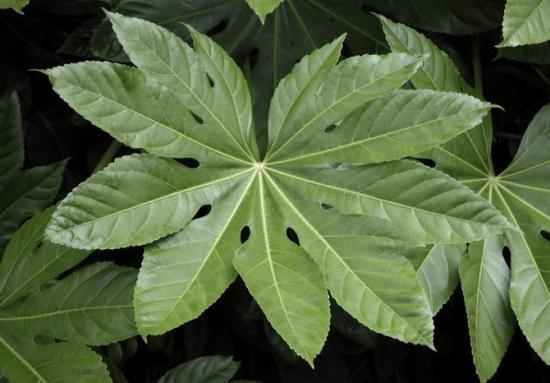
Watering is very important for this plant because it does not tolerate stagnation of moisture and excessive watering. The roots will begin to rot. But Fatsia will immediately react to drought with lethargy, and the leaves will drop. Therefore, it needs to be watered regularly with settled water.
You need to watch the soil moisture especially carefully in summer; you should not let the top layer of soil dry out. In winter, you should focus on your home temperature. If the room is cool, you should not water often.In addition to watering, fatsia should be sprayed.
In the summer, this should be done regularly, and in the winter season, spraying should be reduced, although you should not refuse to spray in winter, the dry air from the batteries will not have a beneficial effect on the plant.
With good care, the plant has a very rich crown, for this it needs feed, because the minerals contained in the soil of the pot are completely lacking. In winter, you should not feed the green beauty, since it is in a dormant state; you should start adding fertilizers in the spring.
Soil requirements
In nature, fatsia grows in places rich in humus. At home, soil is bought at flower shops. You just need to choose soil for fatsias; it is commercially available. You can also make your own soil mixture from one part leaf humus, one part sand and two parts turf soil. Suitable for fatsia and hydroponics.
Flower propagation
Cuttings
Conduct cuttings in the spring. Cut cuttings with 2-4 buds, place them in a moist substrate and cover with a jar on top to establish a humid regime. The substrate should consist of sand and peat. At 23-26 degrees, the cuttings quickly produce roots, after which they are planted in pots.
Video about the correct fatsia transplant:
Sowing seeds
The flower also reproduces well by seeds, but keep in mind that the seeds must be fresh. For seeds, you should make a substrate of 1 part sand, 1 part leaf soil, 1 part turf soil. The temperature for seed germination should be no lower than +18 degrees. When the seedlings sprout and get stronger, you can transplant them into small pots. The soil in these pots should be the same as for an adult fatsia.
Air layering
Often the flower is propagated using air layering. This is not difficult to do, you need to make a neat, small cut on the trunk in the spring, apply moss to it (it is better if the moss is soaked in phytohormone - 1 liter of water per 1 g of substance), and wrap a film on top. You need to make sure that the moss does not dry out. After some time, the plant will take root in this place.
The top along with the roots is cut off below the level of the roots and planted into a separate pot, and the remaining stem will again produce young shoots.
What can destroy a plant
- dry soil in pots is dangerous because the leaves will droop, become covered with brown spots, and subsequently the plant may die;
- dry air makes leaves brittle and wrinkled;
- an excess of moisture leads to the leaves becoming limp and soft, the roots rotting, and the flower dying;
- pests (scale insects, spider mites, whiteflies, mealybugs) can spoil not only the appearance of the flower, but also lead to its complete death;
- diseases (gray rot, burn, etc.) can lead to weakening of the flower, and if treatment is not carried out, then to its death;
Application of flower
Fatsia is a flower that will not be capricious and demand the impossible, for this it is especially appreciated. However, it should be borne in mind that its leaves are too poisonous; they have a destructive effect on the nervous system. Because of this, the flower has no use in cooking or medicine.
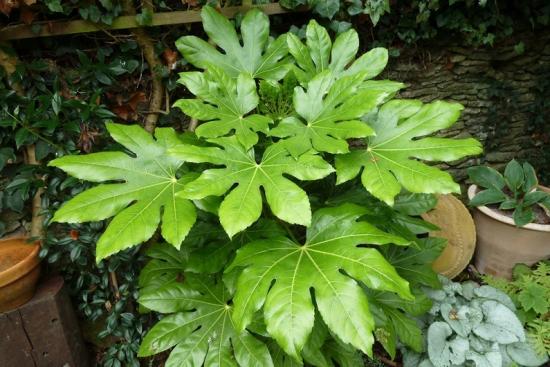
And yet, if you follow the usual precautions, a lush flower can perfectly decorate shady places on the site in the summer, decorate what needs to be hidden, its dense foliage will become a highlight for any area where it will be planted.
Fatsia is also irreplaceable in apartments - not every plant can withstand the light minimum at which Fatsia will retain its lush greenery. It is worth providing her with the minimum care, and a modest beauty will transform any room.

